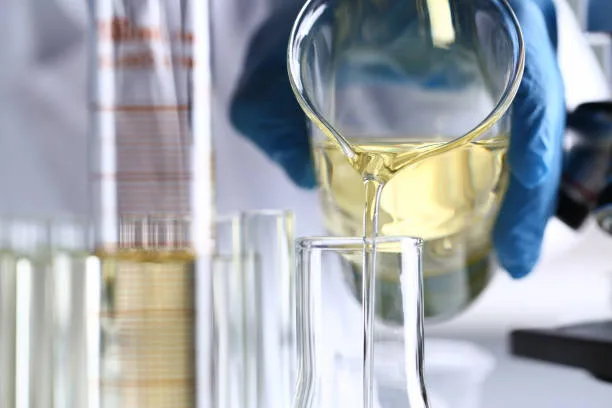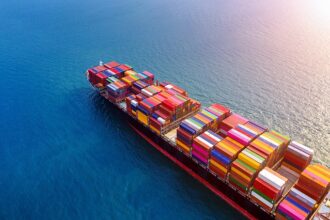The Asia textile chemicals market is on track for a decade of robust expansion, with its value projected to jump from USD 15.9 billion in 2025 to USD 28.5 billion by 2035, according to new industry research. This represents a strong 6.0% compound annual growth rate (CAGR) as demand rises for sustainable textile chemicals, high-performance fabrics and eco-friendly production processes across China, India, Bangladesh, Vietnam and other key manufacturing hubs.
Asia Textile Chemicals Market: USD 28.5B by 2035
Key Growth
6.0% CAGR
From USD 15.9B (2025) → USD 28.5B (2035)
Top Product Segments
Textile Auxiliaries – 54.6% share
Driving softness, durability & sustainable finishes
Pre-Treatment Chemicals – 47.2% share
Low-water, low-energy solutions for efficiency
Main Driver
Apparel Industry – 49.1% demand
Fast fashion & performance fabrics boost chemical use
Regional Leaders
China: Largest market, 6.2% CAGR
India: Fastest growth, 11% CAGR
Textile Auxiliaries Dominate as Sustainable Innovation Accelerates
Textile auxiliaries will continue to lead the market, capturing more than half of total demand by 2025, according to the research conducted by Future Market Insights (FMI). Essential to dyeing, finishing and printing, auxiliaries enhance fabric softness, durability and technical performance, meeting strict global export standards. Producers are investing in low-water and low-energy textile chemicals to cut environmental impact and comply with tightening regulations, making auxiliaries the engine of Asia’s rapidly growing chemical ecosystem.
Pre-treatment chemicals are also gaining ground, expected to account for nearly half of industry revenues in 2025. These solutions prepare fabrics for uniform dye absorption, improving production efficiency in automated textile mills. Eco-friendly pre-treatment chemicals are enabling higher throughput while ensuring compliance with international sustainability requirements.
Also Read: Materials Market Report: Are We Really Making Progress?
Apparel Industry Growth Strengthens Market Demand
The Asia apparel industry remains the largest end user of textile chemicals, representing about 49% of consumption in 2025. Rising exports, fast fashion trends and consumer demand for functional fabrics—including wrinkle-resistant, antibacterial and moisture-management garments—are driving chemical innovation. Manufacturers say that next-generation textile finishes are critical to maintaining Asia’s competitive edge in the global apparel supply chain.
Regional Leaders Drive Expansion and Sustainability
China is set to maintain its position as the largest textile chemicals market in Asia, expanding at a 6.2% CAGR through 2035. Government incentives, large-scale production and export demand support growth. India follows as a major growth engine, projected to surge at an 11% CAGR, fueled by technology upgrades and strong government initiatives. Bangladesh and Vietnam are also gaining momentum, leveraging their well-established apparel export bases to boost chemical demand.
Sustainability remains at the heart of market transformation. Major chemical producers such as Archroma, Huntsman, CHT Group, Tanatex Chemicals, Evonik, Wacker Chemie, Solvay and Dow DuPont are prioritizing biodegradable textile chemicals and non-aqueous dyeing methods to reduce water and energy use. Industry collaborations, including the Sustainable Chemistry for the Textile Industry (SCTI) initiative, are setting new benchmarks for environmental compliance.
Also Read: DyStar’s Sustainability Report Highlights Emissions Progress but Rising Waste Concerns
Competitive Landscape and Future Outlook
The Asia textile chemicals industry remains fragmented, with multinational leaders and regional specialists racing to introduce innovative products and forge strategic partnerships. Recent developments include Cosmo Specialty Chemicals’ launch of water-saving Microenz BS, Huntsman Textile Effects’ partnership with Phong Phu International in Vietnam, and Bozetto Group’s collaboration with Asutex to scale sustainable textile finishing solutions.
Analysts predict that manufacturers prioritizing sustainable chemical management, investing in advanced auxiliaries and aligning with global environmental standards will capture the strongest growth.
From USD 15.9 billion in 2025 to nearly USD 28.5 billion by 2035, the Asia textile chemicals market is not only expanding in scale but reshaping the future of eco-friendly textile production, creating a resilient and globally competitive industry for the next decade.









